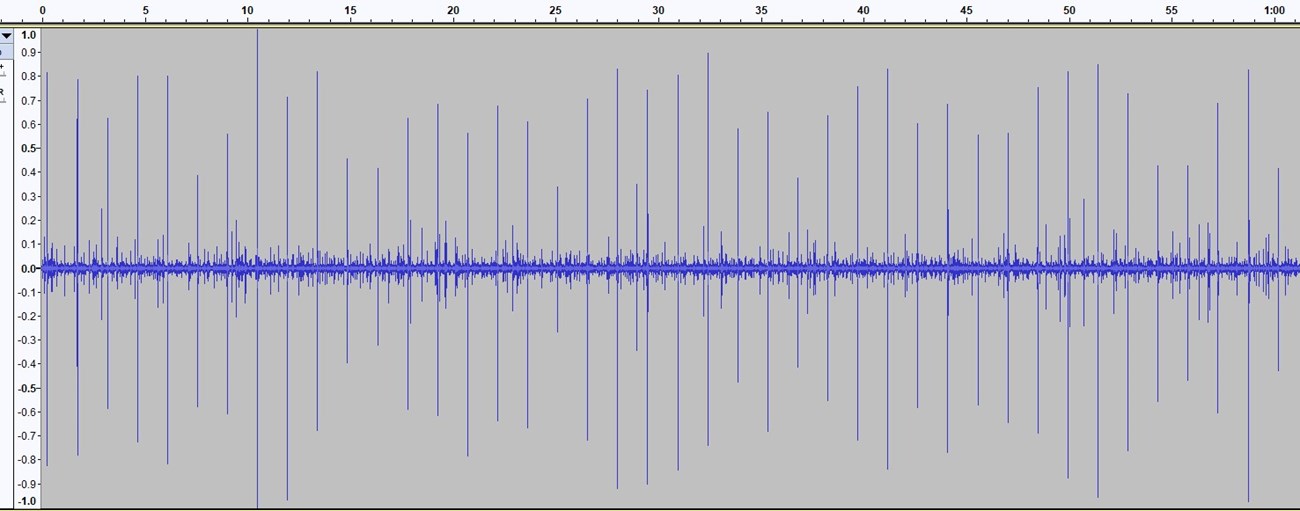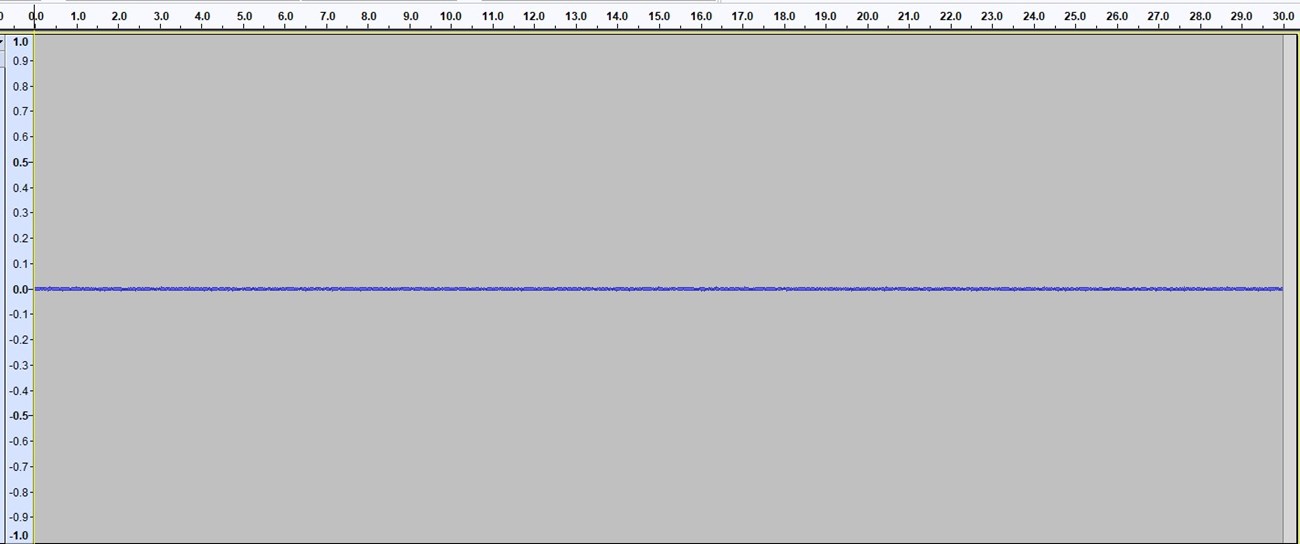Part of a series of articles titled The Midden - Great Basin National Park: Vol. 24, No. 1, Summer 2024.
Article
Sounds in Lehman Caves
This article was originally published in The Midden - Great Basin National Park: Vol 24., No.1, Summer 2024.

NPS/W. Hutton
You walk into Lehman Caves and what do you hear?
Silence?
Your cave guide and other visitors talking about the cave?
Water dripping from the stalactites?
Footsteps?
Anything else?
We set out to listen to the sounds of the cave using five small, easily deployable Audio Moth acoustic monitors at various locations. Dr. Steve Taylor came up with the idea and helped with the initial placement of the acoustic monitors. The data were analyzed using the open source software program Audacity.

Why do we want to know about these drips? Stalactites form and grow when the calcite dissolved in meteoric water precipitates as it enters the cave. But how fast do they grow? Do they drip all year? Is the growth constant or in spurts (pun intended). How might the drip rate contribute to our knowledge of stalactite growth? What factors play a role in how fast or how long a stalactite drips? What can we learn from measuring the rate of drips and by implication the amount of water flowing through a stalactite? We hope to be able to begin to understand the answers to some of these questions.
The sensors were deployed in five areas throughout the cave, both near and far from the tourist trail. These locations were chosen in areas where we could (hopefully) isolate the drip sounds of a target stalactite but this was not always the case, especially with the huge snowpack of 2023.

Data collected in the winter (February-early March 2024) contrasted with the previous data, as very little meteoric water infiltration occurred at that time and therefore we heard minimal dripping sounds.
These preliminary results show that the drip rates and amounts vary between our target locations. Future study will concentrate on snowmelt, temperature, and depth of the studied location as well as the amount of overburden rock and its porosity and permeability.
Although we often think of caves as very quiet places, this study is showing that isn’t always true, and now we have some data to better explain that.
Last updated: June 18, 2024
